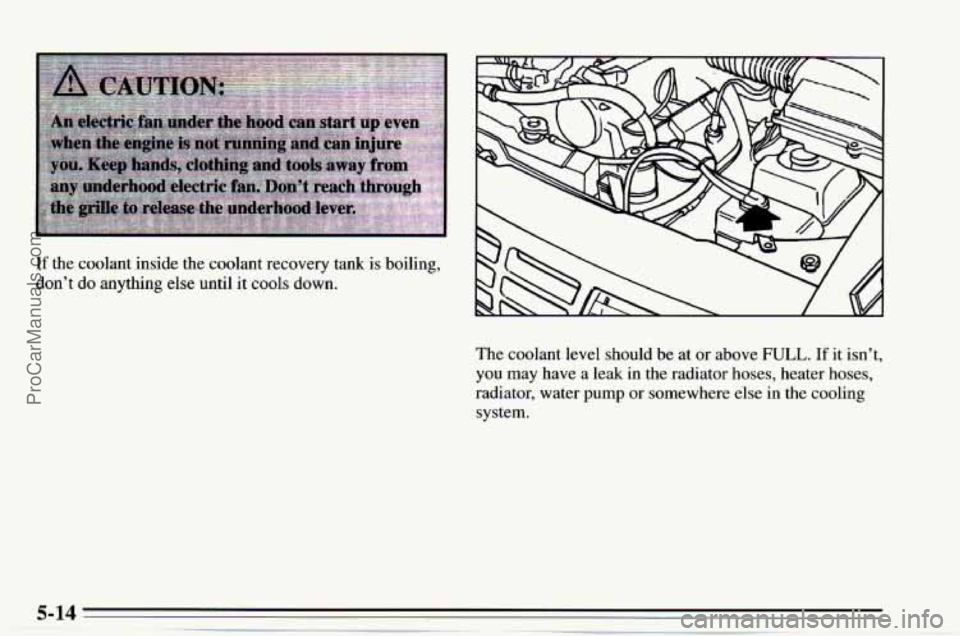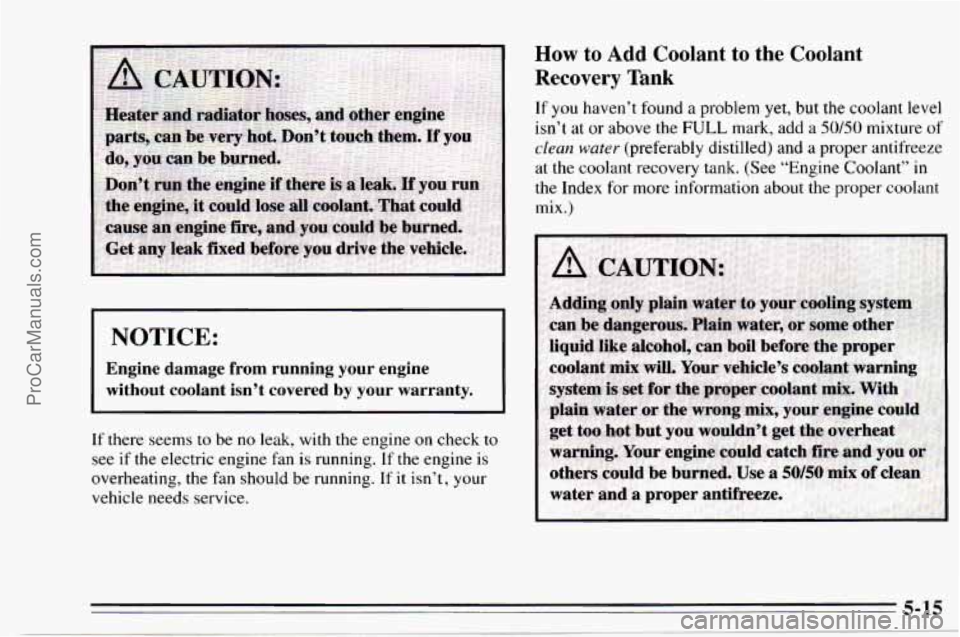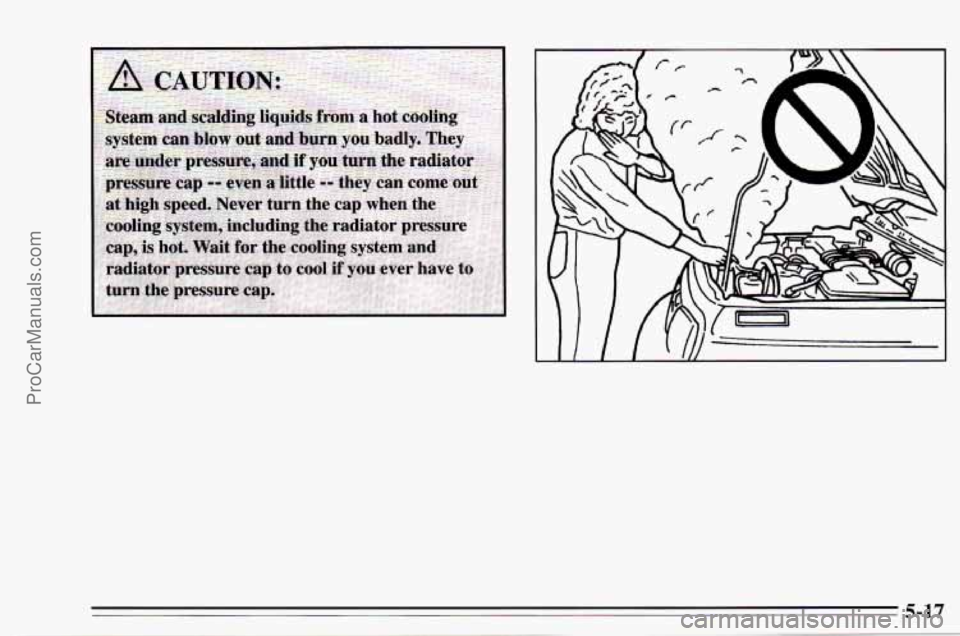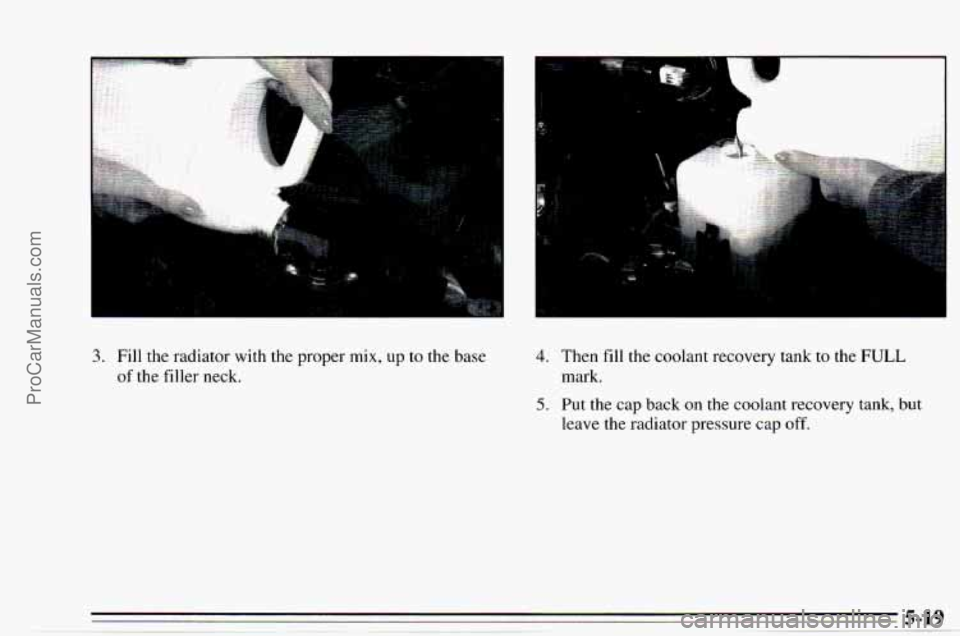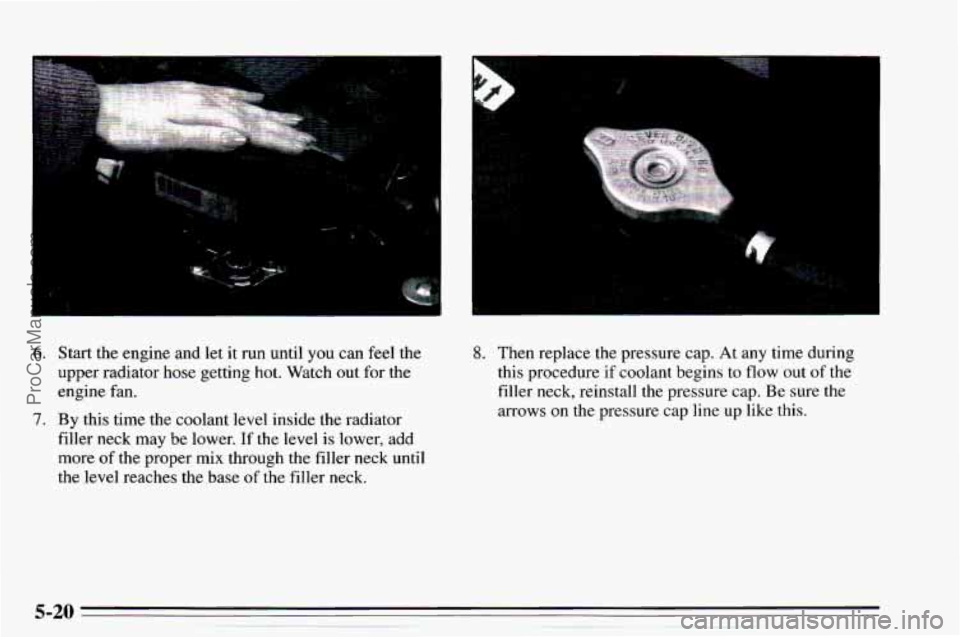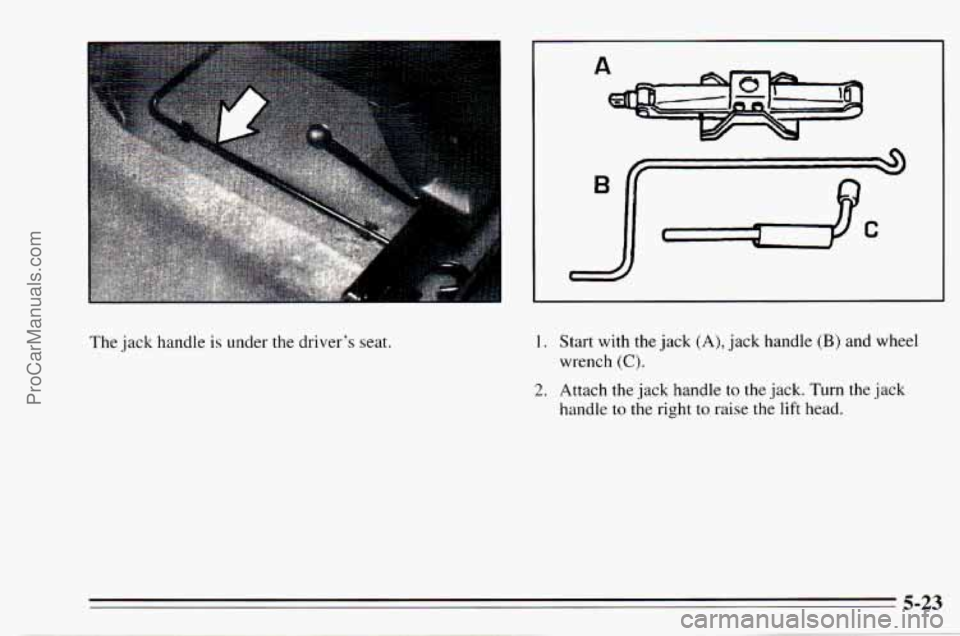CHEVROLET TRACKER 1995 Owners Manual
TRACKER 1995
CHEVROLET
CHEVROLET
https://www.carmanualsonline.info/img/24/57720/w960_57720-0.png
CHEVROLET TRACKER 1995 Owners Manual
Trending: cruise control, engine oil capacity, key, ground clearance, relay, child seat, sensor
Page 191 of 354
If the coolant inside the coolant recovery tank is boiling,
don’t do anything
else until it cools down.
The coolant level should be at or above
FULL. If it isn’t,
you may have a leak in the radiator hoses, heater hoses,
radiator, water pump or somewhere else in the cooling
system.
ProCarManuals.com
Page 192 of 354
NOTICE:
Engine damage from running your engine
without coolant isn’t covered by
your warranty.
If there seems to be no leak, with the engine on check to
see if the electric engine fan is running. If the engine is
overheating, the fan should be running.
If it isn’t, your
vehicle needs service.
How to Add Coolant to the Coolant
Recovery Tank
If you haven’t found a problem yet, but the coolant level
isn’t at
or above the FULL mark, add a 50 mixture of
clean water (preferably distilled) and a proper antifreeze
at the coolant recovery tank. (See “Engine Coolant”
in
the Index for more information about the proper coolant
mix.)
ProCarManuals.com
Page 193 of 354
I NOTICE:
In cold weather, water can freeze and crack the
engine, radiator, heater core and other parts. Use
the recommended coolant.
When the coolant in the coolant recovery tank is at or
above the
FULL mark, start your vehicle.
If the overheat warning continues, there's one more
thing
you can try. You can add the proper coolant mix
directly to the radiator, but be sure the cooling system is
cool before you do it.
ProCarManuals.com
Page 194 of 354
Page 195 of 354
How to Add Coolant to the Radiator If you hear a hiss, wait for that to stop. A hiss means
there
is still some pressure left.
1. You can remove the radiator pressure cap when the
cooling system, radiator including
the pressure cap
and upper radiator hose,
is no longer hot. Turn the
pressure cap slowly to the left until it first stops.
(Don’t press down while turning the pressure cap.)
2. Then keep turning the pressure cap, but now push
down
as you turn it. Remove the pressure cap.
5-18 .
ProCarManuals.com
Page 196 of 354
.. ... ., . ,.
... . .. ..
I I
3. Fill the radiator with the proper mix, up to the base
of the filler neck.
1
4. Then fill the coolant recovery tank to the FULL
mark.
5. Put the cap back on the coolant recovery tank, but
leave the radiator pressure
cap off.
ProCarManuals.com
Page 197 of 354
6. Start the engine and let it run until you can feel the
upper radiator hose getting hot. Watch out for the
engine fan.
7. By this time the coolant level inside the radiator
filler neck may be lower.
If the level is lower, add
more
of the proper mix through the filler neck until
the level reaches the base of the filler neck.
8. Then replace the pressure cap. At any time during
this procedure
if coolant begins to flow out of the
filler neck, reinstall the pressure cap. Be sure the
arrows on the pressure cap line up like this.
5-20 ~ - . . I .. - -- . . .,.^. . . .. ProCarManuals.com
Page 198 of 354
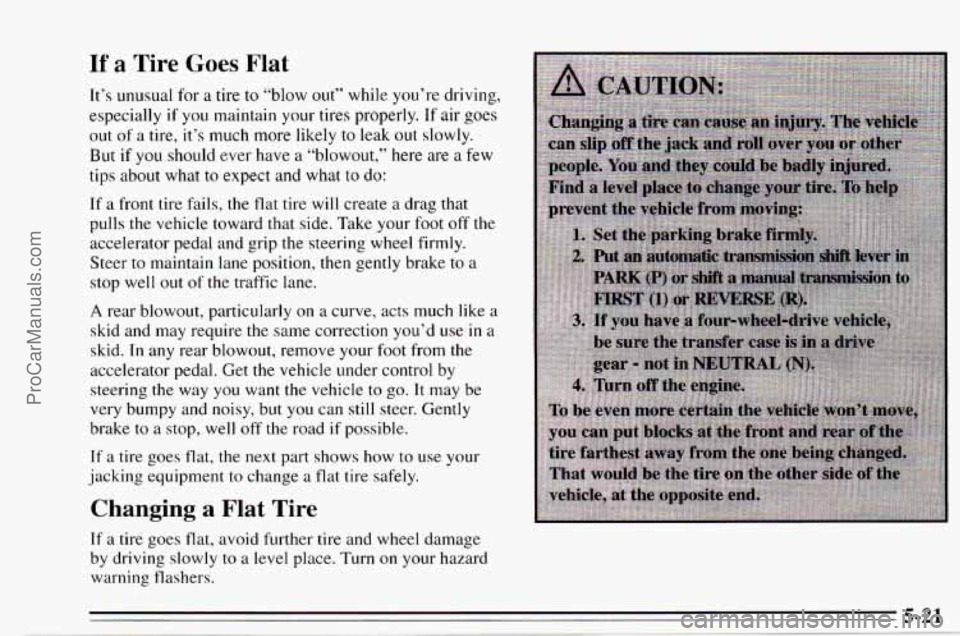
If a Tire Goes Flat
It’s unusual for a tire to “blow out’‘ while you’re driving,
especially if you maintain your
tires properly. If air goes
out of
a tire, it’s much more likely to leak out slowly.
But if you should ever have a “blowout,” here are a few
tips about what to expect and what
to do:
If a front tire fails, the flat tire will create a drag that
pulls
the vehicle toward that side. Take your foot off the
accelerator pedal and grip
the steering wheel firmly.
Steer
to maintain lane position, then gently brake to a
stop well out of the traffic lane.
A rear blowout, particularly on a curve, acts much like a
skid and may require the same correction you’d use in a
skid. In any rear blowout, remove your foot from the
accelerator pedal. Get the vehicle under control by
steering the way you want the vehicle to
go. It may be
very bumpy and noisy, but you can still steer. Gently
brake
to a stop, well off the road if possible.
If a tire goes flat, the next part shows how to use your
jacking equipment to change a flat tire safely.
Changing a Flat Tire
If a tire goes flat, avoid further tire and wheel damage
by driving slowly
to a level place. Turn on your hazard
warning flashers.
5-21
ProCarManuals.com
Page 199 of 354
The following steps will tell you how to use the jack and
change a tire. The
equipment you’ll need is under the front seats.
The jack and wheel wrench are under the passenger’s
seat.
5-22 I ProCarManuals.com
Page 200 of 354
The jack handle is under the driver’s seat. 1. Start with the jack (A), jack handle (B) and wheel
wrench
(C).
2. Attach the jack handle to the jack. Turn the jack
handle
to the right to raise the lift head.
ProCarManuals.com
Trending: seats, airbag, stop start, service schedule, towing capacity, radiator cap, CD player
